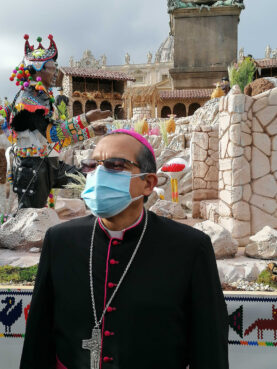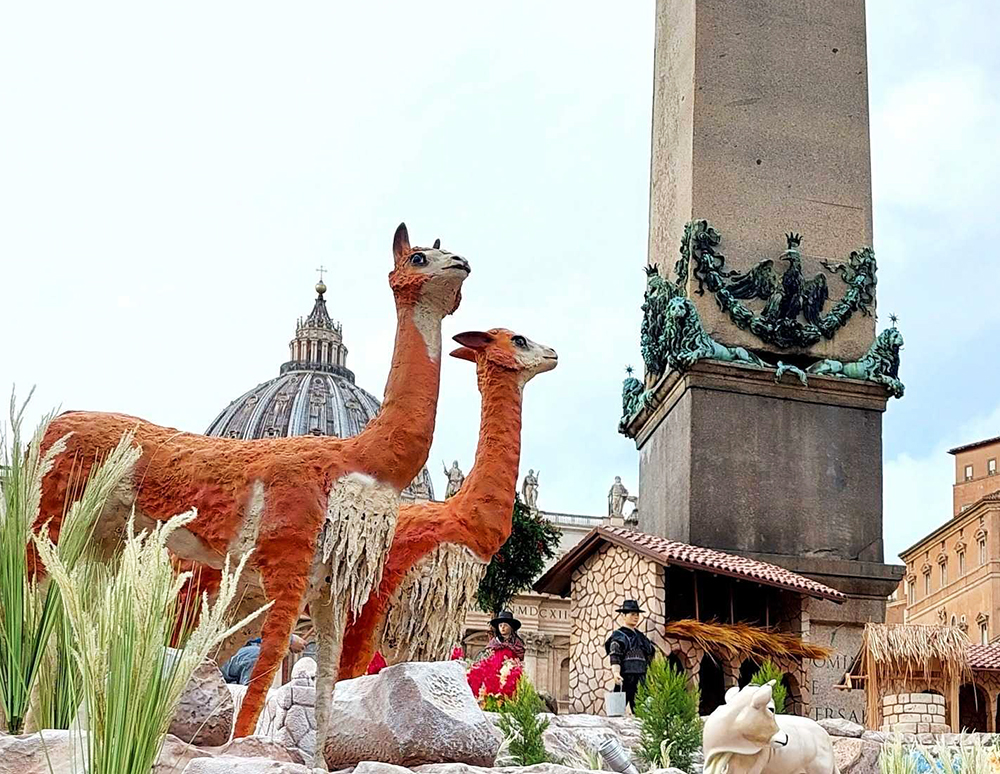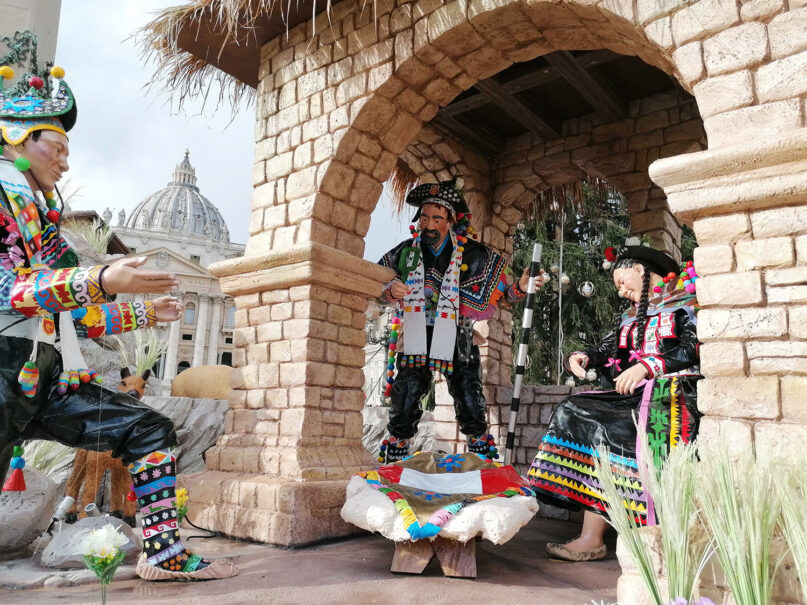VATICAN NEWS (RNS) — Pope Francis used the unveiling of the Vatican’s Peruvian-themed Nativity scene this year to urge Catholics to combat indifference and to keep their eyes on the meaning of Christmas, as he welcomed a delegation of Indigenous Peruvians and their bishop.
“Dear friends, this is Christmas; don’t let it be polluted by consumerism and indifference,” Francis said. “The tree and the Nativity scene introduce us to that atmosphere that is typical of Christmas and is part of the patrimony of our communities: an atmosphere of tenderness, sharing and familiar intimacy.”
The message echoed a moment from his recent papal visit to Cyprus, where he broke from his prepared remarks to address Europe’s migrant crisis, saying, “We cannot keep quiet (about a) culture of indifference.”
The Nativity scene celebrates the natural landscapes and biodiversity of Peru, which this year celebrates the 200th anniversary of its independence. The scene’s characters are dressed in traditional fabrics and designs, including colorful bom boms, and the angels’ usual lyres and harps are cast aside in favor of Peruvian flutes and drums.
Towering over the Nativity scene is a majestic Andean condor with its wings open toward the sky, while, on the other side, a statue of Mary, shown wearing the typical braids of the Chopcca people, holds her arms up to welcome the baby Jesus, who will not be added until Christmas Day.
“We don’t have camels in this Nativity; we have llamas, we have alpacas, we have vicuñas, we have parihunas (Andean flamingos), the bird that is part of the colors of the flag,” said Jorge Eduardo Román Morey, who presented his credentials to Francis as the new Peruvian ambassador to the Vatican two weeks ago.

Bishop Carlos Alberto Salcedo Ojeda of Huancavelica, Peru, stands in front of this year’s Peruvian-themed Nativity scene. Bishop Ojeda hopes that the scene will help highlight the Chopcca people living in the Peruvian Andes. RNS photo by Claire Giangravè
The three kings in the Nativity scene are shown with varying skin colors representative of the diversity in the region, and “they do not bring, gold, incense or myrrh, they bring quinoa, Andean products, corn,” Román said.
The delegation from Peru included representatives of the Chopcca, a “fervently religious” Andean people, and is in keeping with the inclusion at Vatican events of people from what Francis calls “the peripheries.”
“I would like to highlight that this crèche represents the faith of the Chopcca people in Jesus, in the baby Jesus,” said Bishop Carlos Alberto Salcedo Ojeda of Huancavelica, Peru, but it also shows “their faith in their community life.”
Despite the challenges that the community faces, the bishop added, which include the pandemic, poverty, corruption and the neglect by government authorities, the Chopcca people still carry “a lot of hope,” he said.
Salcedo, who was appointed by the pope in May to oversee the diocese where many Chopcca people reside, said that he learns “from them, from their hope and their faith,” and that it inspires him in his duties as bishop.
“The Chopcca people also represents the other people of the mountainous regions, of the jungle and all of Peru; that in the midst of difficulties, they continue forward, promoting community life and solidarity,” the bishop said. “And this is something that is helping the Peruvian people to stand up.”
RELATED: Evidence of Dorothy Day’s ‘everyday’ sainthood heads to Rome, boxed and beribboned

The Vatican Nativity scene includes both traditional and non-traditional animals ranging from cows to birds to llamas. RNS photo by Claire Giangravè
“At Christmas, God reveals himself not as one who is up high to dominate, but as he who lowers himself, small and poor, to serve,” Francis said. “For it to really be Christmas, let us not forget this: God comes to be with us, and he asks us to take care of our brothers and sisters, especially the most poor, weak and fragile, which the pandemic risks marginalizing even more.”
This year’s Christmas tree, a 90-foot-tall spruce brightly adorned with wooden and glass ornaments, was given to the Vatican by a town in the northern Italian region of Trentino. “The Christmas tree,” the pope said, “evokes rebirth,” and “the lights of the spruce are a reminder of Jesus, the light of love that continues to shine in the nights of the world.”
Due to the COVID-19 pandemic and the cold weather, the Vatican announced on Friday that the ceremony to unveil the Nativity scene would take place inside the Paul VI Hall at the Vatican.
RELATED: This is an all-hands-on-deck moment for refugee resettlement in this country





